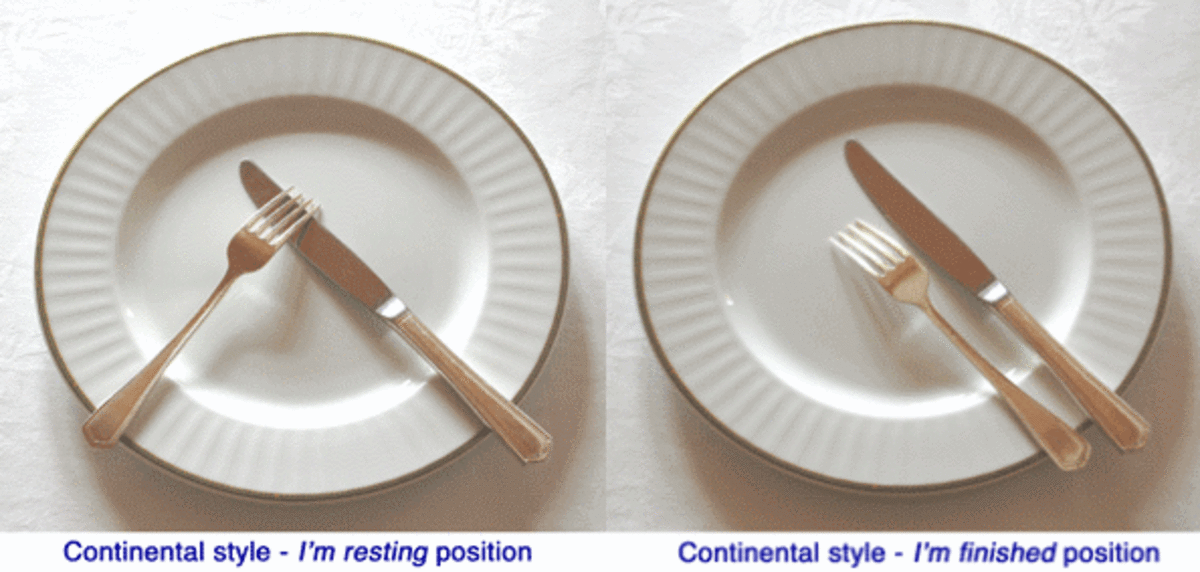Dining etiquette is more than just knowing which fork to use; it's about creating a pleasant atmosphere at the dining table. Whether you're at a family gathering, an upscale restaurant, or a business lunch, understanding dining etiquette helps you navigate various social situations with confidence. It influences how others perceive you and can even impact your relationships, both personal and professional. In this modern age, good manners and polite behaviors enhance the dining experience, making it more enjoyable for everyone involved. So, why should we invest time in mastering dining etiquette? Let's dig deeper!
The Importance of Proper Technique

When it comes to dining, the technique is everything! Here’s why mastering the proper use of a fork and knife is crucial:
- First Impressions Matter: The way you handle your utensils can create a lasting impression. People often associate good etiquette with professionalism and sophistication.
- Enhances Dining Experience: Using your utensils correctly can make meals more enjoyable. You won’t have to struggle with your food, leading to a more relaxed atmosphere.
- Shows Respect: Proper technique is a sign of respect for those you’re dining with, as well as for the food itself. It demonstrates that you appreciate the effort that went into preparing the meal.
- Helps Avoid Accidents: Knowing how to maneuver your fork and knife minimizes the risk of food accidents. The last thing you want is to drop food or create a mess at the table.
- Boosts Confidence: Mastery of dining techniques can boost your confidence in various social scenarios, reducing anxiety about food-related interactions.
By focusing on proper technique, you not only improve your own dining experience but also contribute to a more refined atmosphere for everyone at the table. So, let’s embrace the art of using a fork and knife with grace and style!
Basic Guidelines for Holding a Fork and Knife
Using a fork and knife might seem straightforward, but there’s actually a bit of finesse to it! Here are some basic guidelines to help you hold your utensils like a pro:
- Positioning: Hold the fork in your left hand and the knife in your right if you're dining in a Western style. This positioning is traditional and widely accepted in most dining settings.
- Grip: Hold the fork with your thumb and index finger guiding the handle, while your other fingers wrap around the bottom. This grip gives you better control and provides stability while cutting.
- Knife Holding: Similar to the fork, hold the knife with your thumb and index finger on the handle, but use your middle finger to provide additional support underneath. This way, you can apply the right pressure when cutting.
- Upright Posture: Sit up straight and keep your elbows close to your body while eating. This contributes not only to good etiquette but also ensures you’re comfortable while navigating your food.
Lastly, remember that practice makes perfect! The more you familiarize yourself with these holds, the more natural it will feel during meals.
Step-by-Step Instructions for Cutting Food
Cutting food properly is essential for a graceful dining experience. Follow these step-by-step instructions to master this art:
| Step | Description |
|---|---|
| 1 | Position your plate correctly: Ensure your plate is directly in front of you and the food is easily reachable. |
| 2 | Use your knife to slice: Hold your fork in your left hand to stabilize the food while using your knife in your right hand to cut through it smoothly. |
| 3 | Cut only a few bites at a time: Avoid cutting the entire piece of meat or vegetable at once. Cut just enough to take a bite, which ensures a neat plate appearance. |
| 4 | Chew discreetly: Once you have a piece cut, chew your food with your mouth closed, taking care to remain polite while dining. |
| 5 | Switch hands if necessary: In some cultures, it's appropriate to transfer the fork to your right hand after cutting to take a bite, so be aware of the dining customs around you. |
By following these step-by-step instructions, you’ll cut your food like a seasoned diner, making every meal a delightful experience!
Common Mistakes to Avoid
When it comes to mastering the art of using a fork and knife, there are several common pitfalls that people often stumble into. Avoiding these mistakes can elevate your dining experience and ensure you appear polished and confident. Here are some key missteps to watch out for:
- Holding Utensils Incorrectly: Many people grip their fork and knife too tightly or hold them at awkward angles. Ideally, the fork should be held with the tines facing down, while the knife should be held with the handle resting comfortably in your palm.
- Cutting Too Much Food at Once: It's tempting to slice through big portions, but cutting one bite at a time not only looks more refined but also allows for better control. Think of it like a dance—graceful and measured!
- Resting Utensils on the Plate: If you pause during your meal, avoid resting your knife and fork on the plate at weird angles. Instead, place them on the side of the plate when you're taking a break.
- Skipping the Napkin: Always place your napkin on your lap as soon as you sit down. Failing to do so can come across as careless and messy.
- Not Paying Attention to Audio: Utensils clinking on a plate can be distracting. Try to cut and eat quietly, savoring each bite in a discreet manner.
Avoiding these mistakes can help you navigate any dining scenario with ease and grace!
Dining Etiquette in Different Cultures
When it comes to dining, etiquette can vary widely around the world. Understanding cultural differences can enhance your dining experiences and help you avoid unintentional faux pas. Here's a quick guide to dining etiquette in various cultures:
| Culture | Dining Etiquette |
|---|---|
| France | Keep both hands above the table (but don’t put elbows on the table). Chew with your mouth closed and never talk with food in your mouth! |
| Japan | It’s polite to say "itadakimasu" before eating and "gochisosama deshita" after. Avoid sticking your chopsticks upright in rice, as it resembles an offering to the dead. |
| Middle East | Many dine family style and use their right hand only for eating. Always offer food to the person next to you before serving yourself. |
| India | Using your right hand for eating is essential. Ensure your hands are clean and it’s considered polite to finish your plate. |
| Italy | Don't separate pasta from sauce—it’s meant to be enjoyed together! Also, avoid asking for parmesan on every dish, especially seafood. |
As you can see, a broad understanding of these cultural nuances can significantly enhance your dining experiences. So, the next time you find yourself at an international table, you'll be well-prepared to navigate with ease and respect!
Mastering the Art of Using a Fork and Knife for Perfect Dining Etiquette
When it comes to dining, the way you handle your cutlery can reveal a lot about your manners and sophistication. Using a fork and knife properly is not just about eating; it encompasses an essential skill set that can elevate your dining experience. Below are key points to master the art of using a fork and knife.
Understanding Cutlery Placement
- Fork: Positioned on the left side of the plate.
- Knife: Placed on the right side of the plate, blade facing the plate.
- Spoon: Optional, generally placed to the right of the knife when needed.
The Correct Way to Hold Your Cutlery
When using a fork and knife, follow these guidelines:
- Hold the fork in your left hand, tines facing down.
- Grip the knife in your right hand, held firmly by its handle.
- Use the fork to hold food in place, then cut with the knife.
- If necessary, switch the fork to your right hand after cutting to bring food to your mouth.
Common Dining Etiquette Tips
| Do's | Don'ts |
|---|---|
| Chew with your mouth closed. | Talk with food in your mouth. |
| Use the correct cutlery for each course. | Reach across the table for items. |
| Rest cutlery on the plate when not in use. | Leave cutlery scattered around your plate. |
Mastering the art of using a fork and knife is essential for showcasing fine dining etiquette. By understanding cutlery placement, learning the proper way to hold your utensils, and adhering to common dining protocols, you can significantly enhance your dining experience and impress your fellow diners.
 admin
admin








